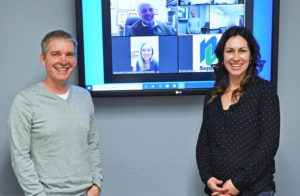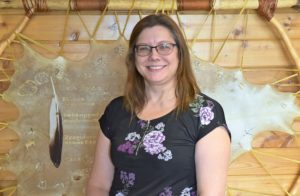First Nations call for Ontario commitment to meaningful engagement on Great Lakes

By Kelly Anne Smith
NORTH BAY— Dokis First Nation academics are among the authors of a study calling for a strong commitment from Ontario for meaningful engagement on the Great Lakes Protection Act.
Meaningful Engagement with Indigenous Peoples: a case study of Ontario’s Great Lakes Protection Act was written by Jessica Lukawiecki, Rhonda Gagnon, Carly Dokis, Dan Walters and Lewis Molot. Gagnon and Dokis are citizens of Dokis First Nation.
The case study explains that although not legislated, the Great Lakes Guardian Council has established the Anishinabek Nation Grand Council Chief Glen Hare as a co-chair and concludes that the Indigenous co-council chair needs permanence.
Lukawiecki says that while the Supreme Court ruled that the Crown’s duty to consult with Indigenous Peoples does not apply to legislation, the Crown should act honourably in negotiations.
“Combing through that piece of legislation, there is a lot of language around still engaging honourably and what that means. That question is still up in the air and hasn’t been defined explicitly by the courts.”
Lukawieki hopes for changes to the ruling.
“It is one of those Supreme Court cases where they were very divided on whether or not duty to consult would apply to legislation. It was not a clear win in one direction or the other…It’s very easy to turn this into a box-checking exercise, ‘We did x and x number of community visits, these phone calls’ and things like that. Those things are rather meaningless unless you’re actually talking about sharing power and creating new structures for that sharing.”
Walters wants to see the co-chair position embedded in the legislation.
“The minister inviting a co-chair hasn’t been necessarily formalized in the legislation. Maybe that would be one way they could better honour this commitment to shared governance is by changing the legislation by which to incorporate that co-chair position. It would be a good effort by this government to show they have a serious intent to take the responsibility to have a co-governance within issues in the province.”
Dokis says that communities need a long-term sustained commitment to relationship building.
“There is this desire to see a commitment toward true relationship-building as an end in itself, instead of consultation for specific pieces of legislation or for a specific extractive project.”

Rhonda Gagnon, Anishinabek Nation’s Land and Resources policy analyst, suggests bringing it back to the Protection Act.
“There is a non-variation clause within the Act…They have to consult regardless because if a project goes forward, the activities impact the rights of communities…If they still want a nation-to-nation relationship when you talk about the Great Lakes, then legislation should reflect that— not just the minister in the chair of the Great Lakes Guardian Council (GLGC), but the Indigenous Nations should co-chair the council as well,” expresses Gagnon. “As decisions are being made by the council, they’re impacting the communities. Either they see projects go ahead without them— it could be a restoration project on or near a shore, and they see it and they haven’t been consulted— so then the question goes, ‘What are they doing? Are they impacting my rights? Are they making it better and how is it going to impact me in the future?’ They don’t know. Even when those tiny projects are happening, our communities are not aware of them. And they would like to be involved with them.”
The project broadens with input from First Nations stresses Gagnon.
“You’re not just involving western science and quantitative methods. You are bringing in traditional knowledge and history that are important to the process…All of our 39 communities are affected by the Great Lakes Protection Act in whatever projects or how they want to implement this Act. They are affected positive or negative, they’re impacted— 65,000 citizens,” explains Gagnon. “Our Grand Chief Glen Hare went to the last Guardian Council which was in April of last year. So right now, it’s still encouraged that the Grand Chief be the co-chair. But it is us that continue to advocate that the minister considers the Grand Chief to be the co-chair. In the legislation, it states that the minister is the chair…We’ve been advocating for so long. Essentially, the Great Lakes is our jurisdiction. It’s Anishinaabe. It’s not just having that relationship with our communities, it’s also about going back to our roots and our wampum relationships.”
“Not just with the Crown but with each other as well. There’s a lot of things going on. We need to be aware of what our neighbours are doing to support each other and have unity,” continues Gagnon. “I talk about the importance of the wampums and how the Crown needs to understand the relationship as well as our communities. It is a two-row wampum. Two sovereignties that need to do their own thing.”
Gagnon makes the motion of the two rows existing beside each other.
“It’s not. It’s a mishmash of everything.”
Meaningful Engagement with Indigenous Peoples: a case study of Ontario’s Great Lakes Protection Act was published in the International Journal of Water Resources Development.


